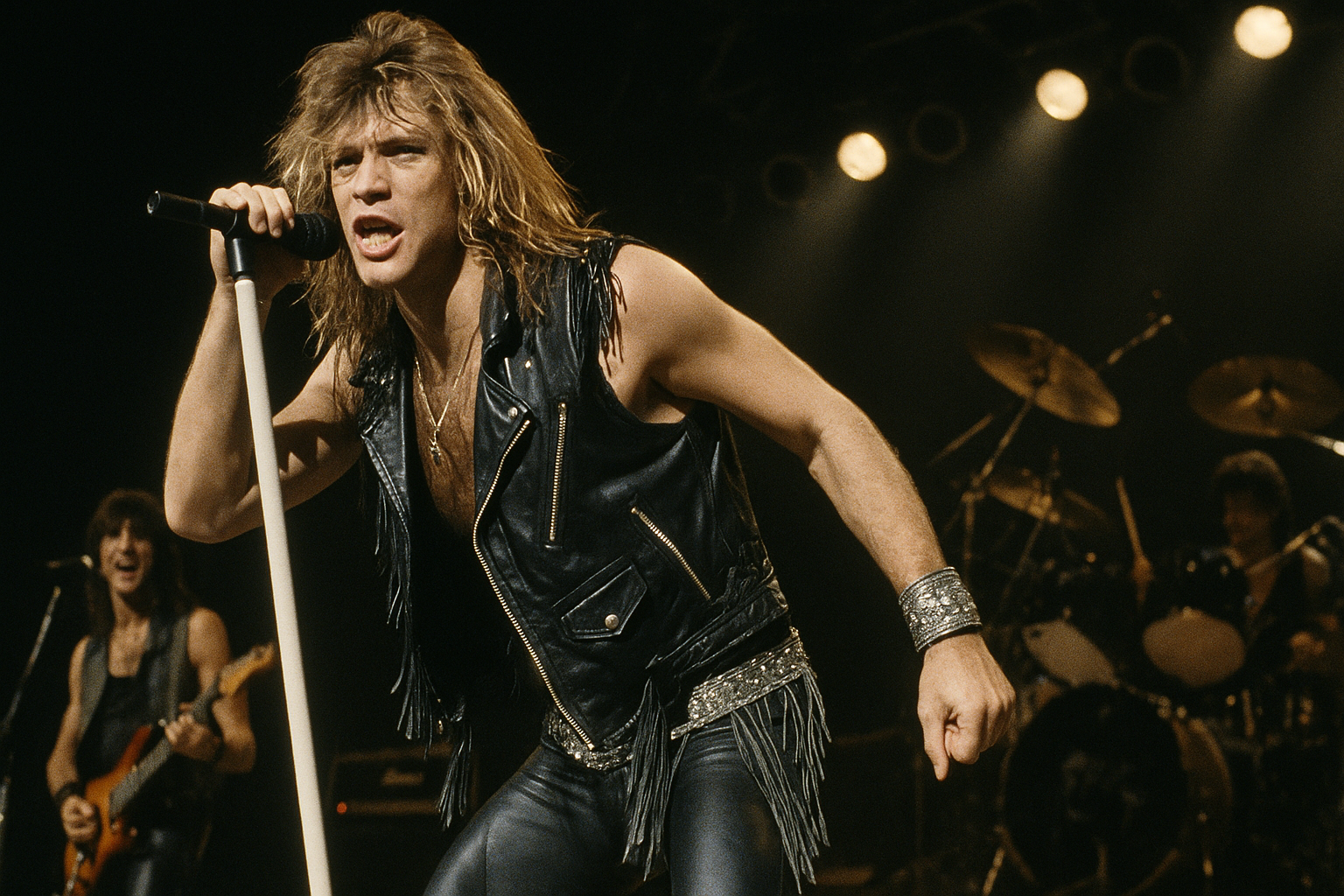Bon Jovi, Arena Rock Glory, and the New Jersey Homecoming That Changed Everything
When fans opened the January 31, 1986 issue of Circus Magazine, they weren’t just flipping through another glossy rock publication. They were stepping into the heart of one of the defining moments of 1980s arena rock: Bon Jovi’s triumphant homecoming in New Jersey after breaking into the global spotlight with their gold-certified album 7800° Fahrenheit.
The article, boldly titled “Bon Jovi: A runaway success comes home,” wasn’t just a backstage report—it was a cultural snapshot of a young band crossing over from regional pride to international acclaim. For readers of the mid-1980s, this was the story of what it meant to rise from the American suburbs into the pantheon of stadium-filling rock stars.
By early 1986, the rock landscape had shifted dramatically. MTV had redefined fan culture, glam metal was surging, and the boundaries between pop hooks and hard rock riffs were blurring.
In this whirlwind, Bon Jovi stood at a crossroads. Their self-titled 1984 debut had drawn attention, but it was their second album, 7800° Fahrenheit, that pushed them into the national conversation. While critics debated its direction, fans drove the record past 500,000 sales, achieving gold certification.
The Byrne Arena homecoming show wasn’t just another concert. It symbolized a band claiming legitimacy in the birthplace of their dreams. For Jon Bon Jovi and his bandmates—Richie Sambora, Alec John Such, David Bryan, and Tico Torres—it was proof that New Jersey could produce not only Bruce Springsteen, but also a new breed of hair-sprayed, spandex-wearing, stadium-conquering performers.
In the 1970s and 1980s, Circus Magazine was one of the most important rock publications in America. Competing with Creem and Hit Parader, it carved its niche by blending serious band features, fan-friendly interviews, glossy photography, and insider coverage.
This issue exemplified that formula. The Bon Jovi feature contextualized the Meadowlands show as both a personal triumph for Jon Bon Jovi and a career turning point for the band.
Highlights included:
-
Jon’s candid remarks about why he couldn’t go home anymore—fans camped outside his parents’ house and left notes on the lawn.
-
The band’s vow to “never open for anyone again” after this tour, signaling their graduation to headliners.
-
Descriptions of Jon’s flamboyant stage costumes and alter ego, “Captain Kidd America.”
-
Photos of the band in action: Sambora’s guitar poses, Torres’s drum solos, Bryan’s keys, and Such’s bass grooves.
Unlike mainstream outlets that only reported sales, Circus gave readers an intimate view of the Meadowlands energy—the lights, the screams, the spectacle.
The Circus layout is as much a story as the text. The photos captured sweat-drenched, electrified moments of a band in its prime.
-
Jon Bon Jovi, with teased blond hair and leather-fringed outfits, exuded confidence as he stretched across the stage.
-
Richie Sambora, still new to the group, grinned as he delivered riffs that would define the Bon Jovi sound.
-
Captions noted the band’s vow never to open for another act, and the gold album presentation that confirmed their hard work had paid off.
At just 23 years old, Jon Bon Jovi was fronting one of the fastest-rising rock bands in the world. Circus blended myth-making with authenticity, creating a shared narrative that fans could celebrate.
-
Byrne Arena as Home Turf: Playing there validated years of hard work.
-
Gold Album Triumph: 7800° Fahrenheit crossing 500,000 sales.
-
Jon’s Fame Dilemma: He couldn’t visit home without mobs of fans.
-
Captain Kidd America: Jon’s onstage alter ego embodied ’80s theatrics.
-
Brotherhood in the Band: Jon and David Bryan’s lifelong friendship.
-
Headlining Vow: The decision to never open for another act.
-
Fan Frenzy: Crowds at homes, hotels, and arenas.
-
Fashion and Theatrics: Jon’s half-dozen costume changes per show.
-
Performance Energy: Intensity, sweat, and physicality of the music.
-
The Meaning of “Home”: Jon’s reflections on identity and belonging.
For collectors today, issues like Circus (January 31, 1986) are more than nostalgia—they are artifacts of rock history.
-
Historical Timing: Captures Bon Jovi right before Slippery When Wet (1986) catapulted them to superstardom.
-
Iconic Photography: Jon, Richie, and the band in mid-’80s regalia—spandex, leather, hair spray, and sweat.
-
Cultural Significance: Holding the same magazine that fans read in 1986 when Bon Jovi were still proving themselves.
Collectors value these magazines for their authentic, real-time documentation of rock’s biggest decade.
Circus endured because it did more than cover bands—it built fan communities. Before the internet, this was how fans got backstage stories, album milestones, and tour updates.
Today, flipping through these magazines is like stepping into a time machine. The hairstyles, the quotes, the energy of an era when music was larger than life—it’s all there. That’s why vintage Circus issues are not just collectibles—they’re portals into rock’s golden age.
If you’re passionate about Bon Jovi, arena rock, or music history, original Circus issues offer something truly special.
👉 Browse our full collection of original Circus Magazines here:
Original Circus Magazines Collection
From the 1960s through the 1980s, you’ll find decades of rock history documented in real time—from the Scorpions and Ratt to Bon Jovi, Kiss, and beyond.
The January 31, 1986 issue of Circus Magazine stands as a pivotal document of 1980s rock. Its feature on Bon Jovi captured a band on the brink of superstardom—celebrating their gold record, wrestling with fame, and declaring their intent to dominate arenas.
For readers then, it was exhilarating. For collectors now, it’s invaluable.
Holding this issue today means holding the moment when Bon Jovi transformed from New Jersey hopefuls into global rock icons. And thanks to Circus Magazine’s unmatched photography and storytelling, that story is preserved for us to relive—page by page, riff by riff.

